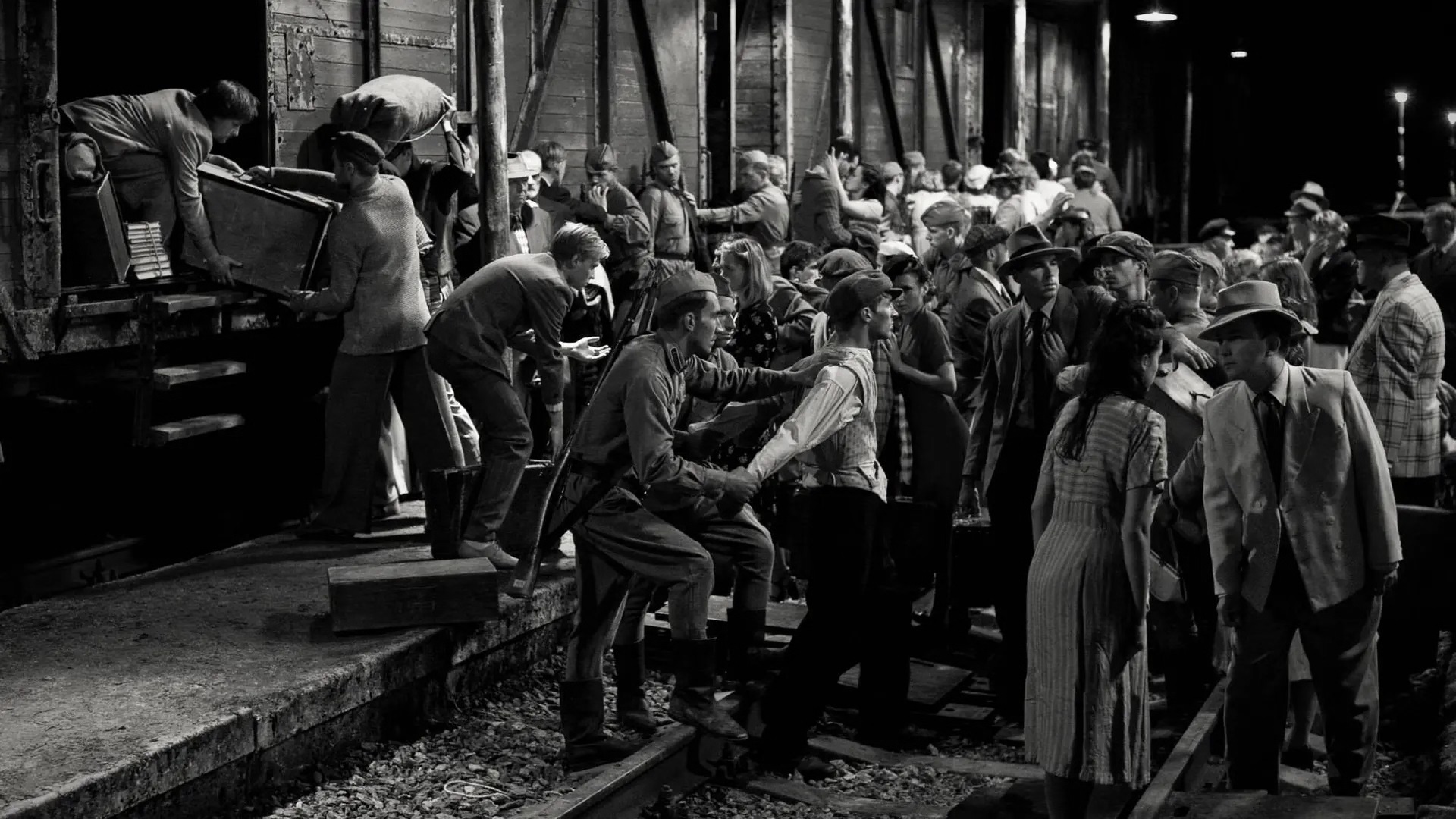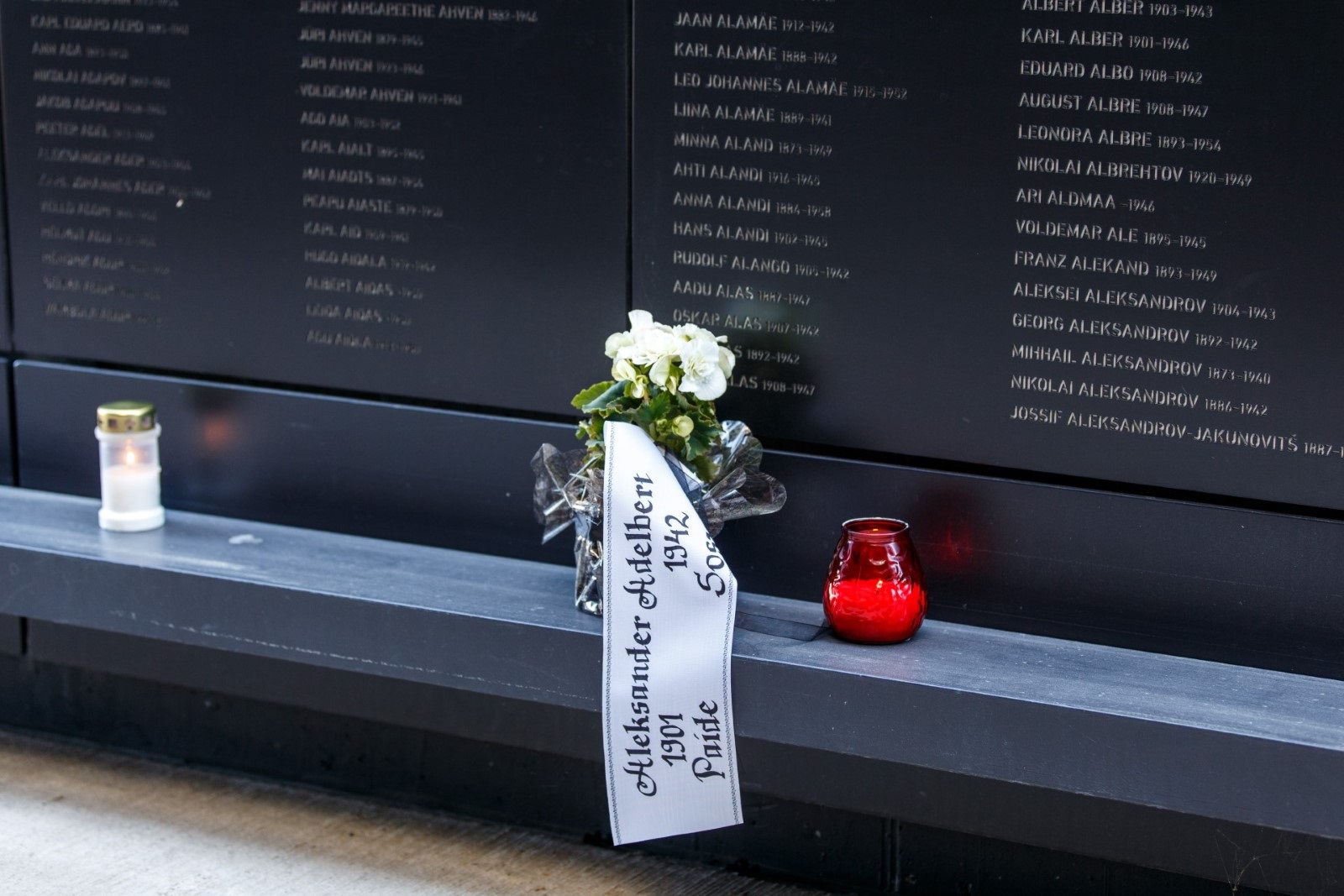Commemorating the victims of June 1941 deportations
June 14 is a day of mourning when we bow our heads in respect for the victims of communist terror.
The summer of 1940 was tragic for the Estonian people, as their national independence was lost, and the country fell under communist rule. Even before the Soviet Union annexed Estonia in 1940, forcibly incorporating it into the union framework, the first arrests by the Soviet authorities had been secrectly carried out.
At first, former soldiers of the Russian White Army living in Estonia disappeared. Several statesmen of the independent Republic of Estonia, as well as Estonian police officers and military personnel, suffered the same fate.
By the spring of 1941, about 2,500 people had been arrested, but more extensive repressions were still yet to come. Rumours of these initial arrests created an atmosphere of fear in Estonia. Indeed, the occupying Soviet authorities were, simulteneously, planning a mass wave of repressions that would ultimately deprive Estonia of its leaders and anyone else representing Estonian independence.

The Soviet secret police - the state's security apparatus – collected evidence against certain groups and persons of interesting in preparation for the first mass deportations. The Central Committee of the All-Soviet Communist Party and the Council of the People's Commissars of the Soviet Union jointly drafted a decree for deportations in the Baltic states on May 14, 1941.
The operation began on June 14. The plan was to deport between 11,000 and 14,500 people from Estonia. The Operative Headquarters, the body that would be responsible for the operation, was formed.
It was led by the following people: Boris Kumm, People’s Commissar for State Security of the Estonian Soviet Socialist Republic (ESSR), Andrei Murro, People’s Commissar for Internal Affairs of the ESSR, deputies of the People’s Commissar for State Security Alexei Shkurin and Venyamin Gulst (in the management of county “troikas”, and Rudolf James, Head of the second Department of the People's Commissar for State Security. The so-called troikas were formed to carry out the operation in twelve counties.
As a rule of thumb, the head of the household was arrested and sent to a Russian prison camp, while other family members were sent to special settlements. Most of the arrested people were sent to Starobelsk or Babynino. Later, when there was a risk that the Starobelski and Babynino prison camps might fall into the hands of the Germans, the prisoners were evacuated to Sverdlovsk Oblast. Most women and children were sent to the Novosibirsk (later Tomsk) and Kirov Oblast collective or state-owned farms and logging sites.
The outbreak of the Soviet-German war in 1941 made the life of deportees even more difficult. Those who were not sentenced to death often died of hunger, disease, or forced labor.
The occupying forces endeavoured to hide the truth about the crimes they committed, a task that their successors persist with even today. For almost 30 years since the Soviet Union collapsed in 1991, historians have attempted to study the victims of this mass deportation operation and other political repressions committed in Soviet Estonia.
Different figures for the number of victims have been provided by researchers, generally ranging between 10,000 and 11,000.
According to the report of Vsevolod Merkulov, People's Commissar for State Security of the USSR, 9,146 people were detained in Estonia during the June 1941 deportation operation. Of these, 3,173 were arrested and sent to prison or executed, and 5,973 were sent to special settlements. Therefore, the findings of our researchers are broadly the same as the information given by the perpetrators at the time. Today, we may consider this matter solved.
Due to the fact that the Estonian population is small, there is still hope and desire to find out the fate of each victim, and to make this information available to their families. Using the data collected by the Estonian Repressed Persons Register Bureau, the Estonian Institute of Historical Memory has been compiling and updating the database of victims since the establishment of the Memorial to the Victims of Communism.
Modern possibilities for data collection and processing provide us with new opportunities to achieve more accurate results. Comparing larger amounts of data makes it possible to identify and correct errors in the database.
As information about many victims is still insufficient, we cannot consider the work completed even today, 80 years after the June deportation. However, we may conclude that the number of arrested people during the mass deportations of June 1941 is probably somewhat lower than the researchers have suggested so far.
The Estonian Institute of Historical Memory aims to find more detailed personal data about each victim and link it to demographic data. During this process, many errors become apparent. For example, a name sometimes appears several times in a database due to incorrect name forms, or a person is considered “repressed“ based on unverified data where further study does not confirm that said person was "repressed"'.
As a result of checks and corrections, the personal data of 8,460 June deportation victims has been verified (including 2,978 arrested and 5,486 deported). If we add 650 potential individuals who have previously been identified as victims of the June deportations but whose data has not yet been linked to other population data, the total number of victims of this operation become 9,100. That result is close to the numbers given by the security bodies of the USSR themselves.
The next step will be to find out the fate of deportees. In general, it is clear that many of them were not able to return home again. So far, we know for sure that 2,382 people were arrested or died in prison. Those who were sent to special settlements were generally better off. Nevertheless, we can say with certainty that 1,458 of them died. Unfortunately, there is no documentary evidence of the fate of many, and it remains unclear at the moment.
The wave of terror that shook the whole of Estonia on June 14, 1941, left a deep wound in the soul of our people, and revealed the nature of the Soviet regime. For that reason, it is understandable that this day has been chosen as a national day of mourning to commemorate all victims of communism in Estonia.

But, we should keep in mind that on this day, we also remember those compatriots who fell victim to deportations and arrests, but survived and are still with us today.
According to the survey conducted by the Estonian Institute of Historical Memory in autumn 2020, there are about 400 people in Estonia who survived the June 1941 deportations. At that time, there were nearly 4,500 people who were repressed for political reasons. In addition to the deportees, there were roughly 2,100 people who were born in Siberia.
We are urging people to check the information related to their respective family members in the database of the Memorial to the Victims of Communism, the so-called 'e-memorial'. We kindly request that anyone who notices a mistake contact us. Together, we will achieve even better results!
Meelis Maripuu has a PhD in history and is a member of the board of the Estonian Institute of Historical Memory.